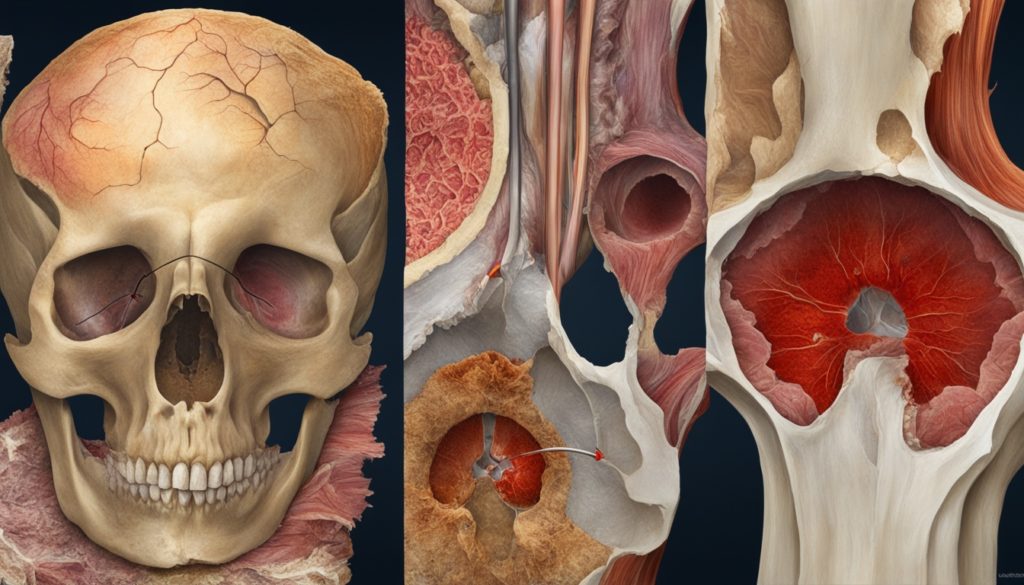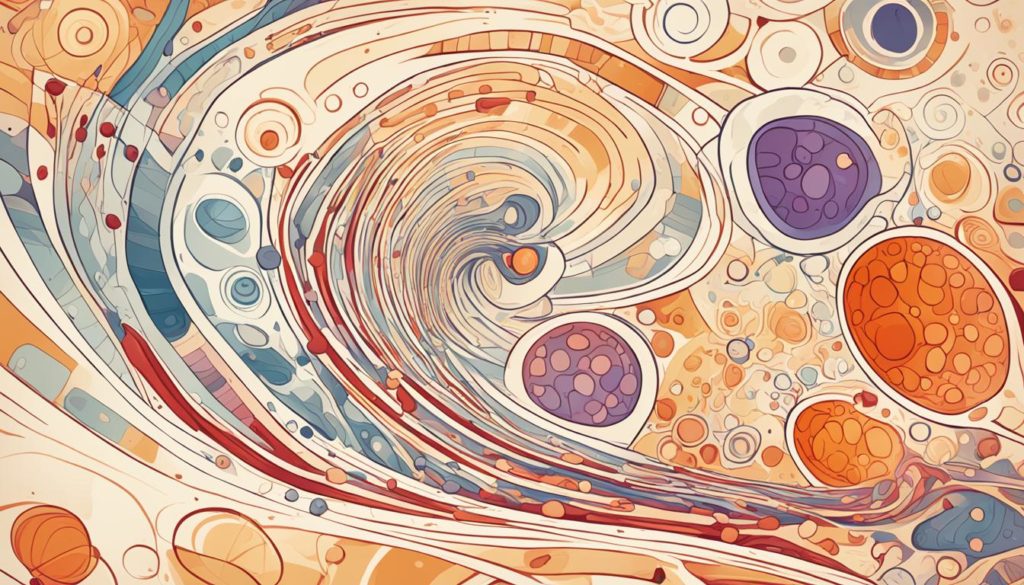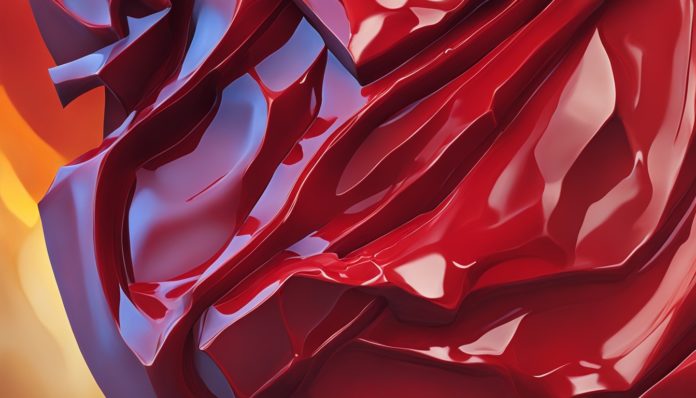Every year, about 70,000 new cases of pilonidal disease are found in the U.S. This shows how common this painful condition is. It mainly impacts the area near the tailbone. Knowing about pilonidal disease, including its causes and treatments, is key to handling it well and avoiding it coming back.
Pilonidal cysts and abscesses can really mess with your day-to-day life. They cause swelling, leaking, and pain. Getting the right diagnosis and treatment for pilonidal abscesses can greatly ease pain and lower the risk of further issues. This article digs into what causes them, signs to watch for, and treatment choices. With this info, you’ll be better equipped to deal with and prevent pilonidal disease.
Key Takeaways
- Pilonidal disease affects thousands of Americans each year.
- Causes include genetic factors, environmental influences, and lifestyle choices.
- Early diagnosis and management can prevent severe complications.
- A variety of treatment options are available, ranging from non-invasive to surgical interventions.
- Preventive measures can help reduce the risk of recurrence.
Understanding Pilonidal Disease
Pilonidal disease mostly hits young adults, especially men. It shows up as a skin infection near the tailbone. Initially, it may start as a small cyst and get worse if ignored.

A detailed understanding of pilonidal cysts reveals its development. It can evolve from a simple cyst to a large one with serious issues. This happens when hair and debris get trapped, causing infection. Understanding pilonidal infections helps in recognizing symptoms early and getting help.
The following table highlights key aspects of pilonidal disease:
| Aspect | Description |
|---|---|
| Common Age Group | Young adults (15-30 years) |
| Gender Predominance | Men |
| Initial Symptom | Painful cyst near tailbone |
| Potential Complication | Severe infection |
When talking about pilonidal cysts, experiences can differ. Some might have minor pain, while others deal with frequent, severe infections. It’s important for at-risk individuals to know about this condition. Early detection and management are key to handling it well.
Causes of Pilonidal Cyst
Pilonidal cysts can arise from several factors like genes, the environment, and personal habits. Knowing these can help manage and lower the risk.

Genetic Factors
Genes play a big role in getting pilonidal cysts. If your family has a history, you might too. Certain body traits make cysts more likely. This includes the type of hair follicles, hair thickness, and lower back shape.
For example, a deep natal cleft or coarse hair ups the chances.
Environmental Influences
Environment affects cyst formation too. Sitting a lot, especially on hard spots, puts pressure on the tailbone area. It makes cysts more likely.
Wearing tight clothes can also be a problem. It traps sweat and dirt, leading to irritation and, eventually, cysts.
Lifestyle Choices
How you live plays a big part in developing pilonidal cysts. Bad hygiene, too much body hair, and not moving enough are risks. Not keeping the tailbone area clean can gather hair and dead skin.
Regular exercise helps by cutting down sitting time and boosting blood flow.
Symptoms of Pilonidal Cyst
It’s important to know the symptoms of a pilonidal cyst for early detection and treatment. If not treated, this condition can lead to severe infections from just mild discomfort.
Early Signs
Early signs include slight discomfort and swelling near the bottom of the spine. A tender lump or redness in the area could be noticed. Catching these early can lead to timely treatment.
Advanced Symptoms
As the issue gets worse, signs of a pilonidal abscess become clearer. Symptoms may get to include intense pain, pus drainage, and a bad smell. Fever, redness, and a warm feeling around the spot also mean infection.
When to See a Doctor
See a doctor when signs of a pilonidal abscess appear, especially with fever or quick symptom worsening. Knowing when discomfort is a warning sign is key. Early cyst identification and treatment of infection can stop further problems.
Treatment Options for Pilonidal Abscess
Treating a pilonidal abscess often includes both simple and surgical methods. The treatment plan is usually decided based on how severe the infection is and whether it keeps coming back. For less severe cases, doctors might suggest nonsurgical treatments. Such treatments could involve taking antibiotics and medications to lessen the pain. These are usually the initial steps in managing the condition.
If these approaches don’t work, draining the abscess might be needed. This process involves making a cut to let out the pus. This step helps lessen swelling and stops further issues. Draining the abscess can offer quick relief and helps in healing, especially in serious cases.
There are also lifestyle changes that help in managing a pilonidal cyst. These include steps to lessen pressure on the sore spot and keeping it clean. Regular washing and removing hair can help avoid more infections. A lot of people see a big difference with these non-invasive treatments.
Here’s a comparison of different methods used to treat pilonidal cysts:
| Treatment Method | Description | Effectiveness |
|---|---|---|
| Antibiotics | Used to manage infection in mild cases. | Moderate |
| Abscess Drainage | Involves incision and removal of pus. | High |
| Topical Treatments | Applied to reduce symptoms and inflammation. | Varies |
| Lifestyle Modifications | Includes hygiene and pressure reduction strategies. | High |
Pilonidal Surgery
Pilonidal surgery helps treat pilonidal cysts and abscesses. It’s vital to know about surgical choices, healing, and care after the operation. This knowledge leads to better health outcomes.
Types of Surgery
Doctors can choose from various surgeries for pilonidal cysts. These include both traditional and less invasive methods.
- Pilonidal Cystectomy: In this traditional surgery, the cyst is completely removed. It may take longer to recover.
- Minimally Invasive Pilonidal Surgery: Techniques like the Bascom procedure offer less pain and quicker healing.
Recovery Process
The healing time changes based on the surgery chosen. Less invasive surgeries heal quicker and hurt less. Here’s what to expect during recovery:
- Initial Phase: Manage pain and any leaking with meds.
- Follow-up Appointments: See the surgeon regularly to check healing.
- Return to Normal Activities: Slowly get back to your daily routine as you feel better.
Post-Surgery Care
Caring well after surgery is key for healing and avoiding more issues. Important tips include:
- Hygiene: Keep the wound area clean and dry, and follow all care instructions from your doctor.
- Activity Restrictions: Don’t sit for too long or do hard activities that pressure the operated area.
- Diet and Lifestyle: Eat well to help your body heal and stay at a healthy weight to ease wound stress.
Knowing about surgery options, healing steps, and how to care for yourself after surgery lessens the chance of problems coming back.
How to Prevent Pilonidal Abscess
To avoid pilonidal abscess, mix good hygiene, lifestyle changes, and medical care when needed. These steps can prevent cysts and lower the chance of them coming back.
Start with good hygiene to greatly lower your risk of infection. Keep the area clean and dry at all times. Wash regularly with mild soap and water, then dry well. Applying antiseptic solutions can also cut down on harmful bacteria.
Lifestyle changes are key too. Try not to sit for too long and stay active. If you have to sit a lot at work, use a cushion or take breaks to walk. Also, wear clothes that let your skin breathe and don’t rub too much.
For some, medical steps are needed to prevent pilonidal disease. If you’ve had cysts before, seeing a doctor regularly can help. They can guide you on how to prevent more cysts and might do simple procedures to help.
| Preventative Measure | Benefit |
|---|---|
| Regular Hygiene | Reduces bacterial load and infection risk |
| Lifestyle Modifications | Prevents friction and pressure on susceptible areas |
| Medical Interventions | Professional guidance in risk reduction |
| Proper Clothing | Enhances air flow and minimizes irritation |
Pilonidal Cyst Home Remedies
Dealing with pilonidal cysts can be tough. But, there are home remedies that can offer relief and comfort. We will look at effective home treatments including topical applications, lifestyle changes, and over-the-counter meds.
Topical Treatments
Topical treatments are great for easing pilonidal cyst discomfort. Applying a warm compress can reduce pain and swelling. It does so by boosting blood flow. Another tip is to use natural antiseptics. Tea tree oil, with its anti-inflammatory effects, can be mixed with a carrier oil and applied to the cyst. This helps fight infection and aids healing.
Lifestyle Adjustments
Changing some habits can also help manage pilonidal cysts at home. Keeping the area clean is key to avoiding infection. Try to limit sitting for long periods and pick activities that lessen lower back pressure instead. Wearing loose clothes that let your skin breathe can also cut down on discomfort and prevent more irritation.
Over-the-Counter Medications
If you need quick relief, over-the-counter medicines can help. Painkillers like acetaminophen and ibuprofen are effective for managing pain. You can also use antibiotic ointments as a natural way to fight off infection. They can protect the area while also speeding up the healing process of the cyst.
Here’s a brief run-down of some home care strategies for pilonidal cyst relief:
| Remedy | Description |
|---|---|
| Warm Compress | Reduces pain and swelling by improving circulation. |
| Tea Tree Oil | Natural antiseptic with anti-inflammatory properties. |
| Good Hygiene Practices | Ensures the affected area stays clean to prevent infection. |
| Avoiding Prolonged Sitting | Reduces pressure on the lower back. |
| Loose-Fitting Clothing | Prevents irritation and allows skin to breathe. |
| Pain Relievers | Medicines like acetaminophen and ibuprofen to manage pain. |
| Antibiotic Ointments | Prevents infection and promotes healing. |
Pilonidal Sinus Infection Risks
Knowing about the complications of pilonidal cyst is key for those with this issue. If not treated, a pilonidal sinus can lead to serious infections. These infections hurt your overall health and wellness.
A big risk of not treating pilonidal sinus is getting chronic pilonidal disease. This means more infections and harder treatments. It makes healing take longer. It also hurts both physical and mental health, causing ongoing pain and worry.
Also, untreated pilonidal sinus can lead to abscesses. These can get big and very painful, and might need surgery. If not dealt with, the infection can spread. This can result in cellulitis or even sepsis, which are very serious.
That’s why it’s crucial to get medical help for pilonidal cysts and sinus infections early. Catching and treating it early helps prevent serious problems. Getting help improves life quality for those with this issue. Medical advice is key to stop symptoms from getting worse and to prevent chronic diseases.
Conclusion
Understanding pilonidal disease is key for its effective management and treatment. We’ve covered its causes, symptoms, and treatment options in depth. It’s crucial to act quickly when facing this condition.
Knowing early signs and when to see a doctor is crucial for good outcomes. Treatment can be as simple as home remedies or as complex as surgery. Keeping clean and living healthy helps avoid future problems.
Dealing with pilonidal disease needs a well-rounded approach. This means getting treatment, preventing future issues, and continuous care. By being well-informed and consulting healthcare professionals, you can manage and overcome pilonidal cysts effectively. A deep understanding and proactive steps lead to the best results in treating tailbone cysts.
FAQ
What is a pilonidal cyst?
A pilonidal cyst is an infection near the tailbone, at the buttocks top. It’s made of hair and skin bits. It can swell and hurt when it gets inflamed.
What causes pilonidal cysts?
They’re caused by various factors, like genetics, sitting a lot, not cleaning well, too much body hair, and tight clothes. These irritate hair follicles, leading to cysts.
What are the common symptoms of a pilonidal cyst?
Symptoms include pain and a swollen area near the tailbone, red skin, and pus or blood coming out. It might smell bad. If it gets worse, it can turn into an abscess, causing more pain and fever.
How is a pilonidal cyst diagnosed?
A doctor diagnoses it by looking for swelling, tenderness, and fluid discharge near the tailbone.
What are the treatment options for a pilonidal abscess?
Treatments include antibiotics, draining the abscess, and sometimes surgery to remove the cyst. Non-surgical treatments help control the infection and relieve pain.
What types of surgery are available for pilonidal cysts?
Surgeries range from a simple cut and drain to removing the cyst and less invasive options. The method depends on the cyst’s severity and if it keeps coming back.
What should I expect during recovery from pilonidal surgery?
Recovery requires taking care of the wound, staying clean, and avoiding things that could bother the surgery spot. Recovery time varies but usually lasts from weeks to a couple of months, based on the surgery’s size.
How can I prevent a pilonidal abscess?
To prevent it, keep clean and dry, don’t sit for too long, wear loose clothes, and remove hair regularly. These reduce friction and irritation.
Are there any home remedies for pilonidal cysts?
Home treatments can bring some relief. Try warm pads, over-the-counter pain relievers, staying clean, and using anti-inflammation creams. Still, see a doctor if things don’t get better or if they worsen.
What are the risks of leaving a pilonidal sinus infection untreated?
Not treating it can cause ongoing pain, more infections, and other serious problems. It might also need bigger surgery later. It’s important to get treatment early to avoid these issues.


